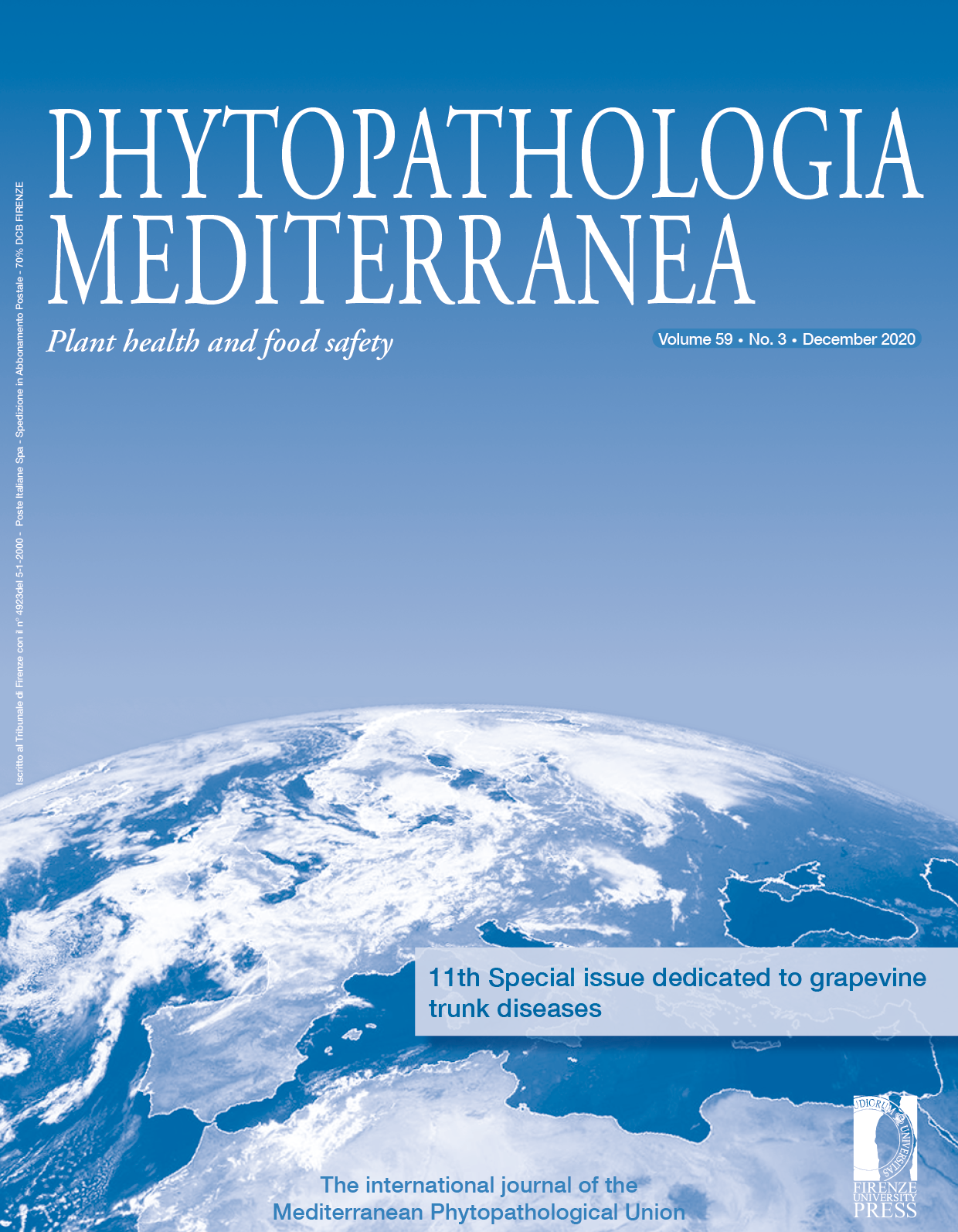Published 2020-08-05
Keywords
- Volatile organic compounds,
- diffusible antifungal compounds,
- Campylocarpon,
- Dactylonectria,
- Ilyonectria
How to Cite
Abstract
Management of black foot disease (BFD) of grapevines is difficult due to limited control options. Biological control fungi, in particular Trichoderma spp., hold potential as part of integrated management of BFD. Trichoderma atroviride, T. fertile, T. harzianum and T. virens were evaluated in vitro against four common BFD pathogens in South Africa, including Campylocarpon fasciculare, C. pseudofasciculare, Dactylonectria macrodidyma and Ilyonectria liriodendri. Effects of Trichoderma volatile organic and diffusible antifungal compounds (VOCs and DACs) and direct antagonistic effects were determined in Petri dish assays. Pathogen growth inhibition was determined in the VOC and DAC assays. Macro- and microscopic observations of fungus interaction zones were made in dual culture plate assays. Greater BFD pathogen growth inhibition occurred with the DACs than the VOCs. For both classes of compounds, D. macrodidyma was the most sensitive pathogen (100% inhibition by DACs and 65% by VOCs). In some cases, depending on the Trichoderma spp. isolate, growth stimulation occurred for I. liriodendri, C. fasciculare and C. pseudofasciculare. Macroscopically observed Trichoderma and BFD pathogen interactions included total or partial overgrowth, often associated with sporulation of the Trichoderma spp., and arrested growth or the formation of inhibition zones. Microscopic interactions included adhesion of the Trichoderma to pathogen hyphae, pathogen hyphae swelling, malformation and disintegration. In general, in vitro efficacy was isolate-dependent, both for Trichoderma spp. and the BFD pathogen.







